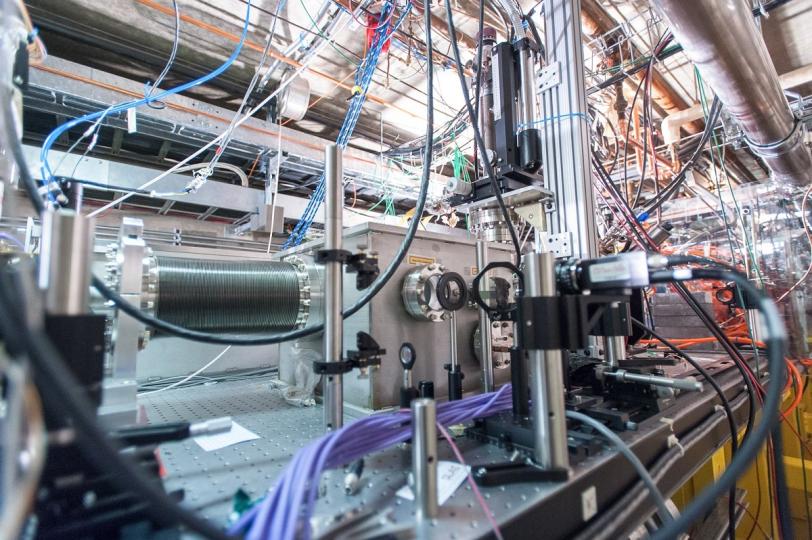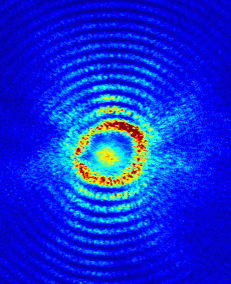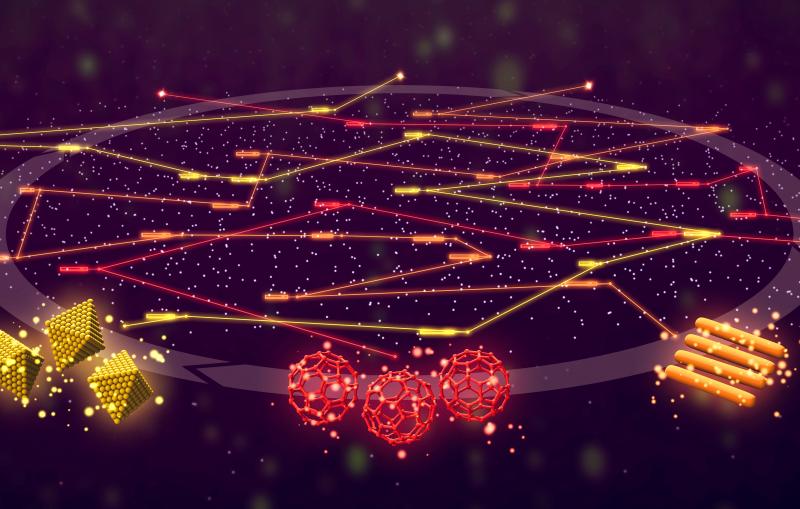Antimatter Once More Flowing to Experiments at SLAC
Following an absence of six years, beams of positrons – the antimatter twins of electrons – are once more streaming through SLAC's linear accelerator to waiting experiments.
Following an absence of six years, beams of positrons – the antimatter twins of electrons – are once more streaming through the linear accelerator to waiting experiments at the Department of Energy’s SLAC National Accelerator Laboratory.
Positrons were last seen at SLAC during a particle physics experiment called BaBar, which studied electron-positron collisions. Because matter and antimatter annihilate into a flash of pure energy when they collide, the particles born from these collisions are easier to track than particles resulting from proton-proton collisions.
When BaBar stopped taking data in 2008, the equipment to create the positrons was left in place. Then SLAC opened the Facility for Advanced Accelerator Experimental Tests (FACET) in 2012, where researchers can explore cutting-edge technologies to power the next generation of accelerators – including accelerators that send matter smashing into antimatter. Positrons were a necessary addition to the FACET toolbox.
Beginning in March, a cross-lab team led by SLAC accelerator physicists Jerry Yocky and Nate Lipkowitz started getting the equipment up and running again. By June, the final push began.
"A lot of people had to work really hard, but it was fun and exciting to bring them back," Yocky said. "SLAC is unique. We make the most positrons anywhere, plus our linac can accelerate them to the highest energy available anywhere in the world today."
Three experiments were able to use the positron beam before FACET shut down for maintenance and upgrades in early July.
Ioan Tudosa, a member of the Stanford Institute for Materials and Energy Sciences (SIMES) at SLAC, exposed magnetic materials to the positron beam. The experiment was a continuation of previous work at FACET on ultrafast magnetic switching. "We don't expect a very different result from previous experiments with electrons, but surprises can occur," he said.
Stanford graduate student Spencer Gessner has been working on ways to accelerate both electrons and positrons in clouds of hot, ionized gas called plasmas. "We saw definite acceleration of the positrons in the plasma," he said. “When you add that to the acceleration we've already seen from electrons in the plasma, I think we've really taken our first steps toward compact accelerators that are still powerful enough for electron-positron colliders."
Gessner is also exploring "hollow channel" plasma acceleration, in which a laser drills through neutral gas, forming a tunnel with walls of plasma. Theory suggests both electron and positron beams can be accelerated through such tubes, and, said Gessner, the research team was able to begin exploring how the positron beam and the tube interacted.
"It's step zero for hollow channel experiments, but it's a big step zero," he said.
Contact
For questions or comments, contact the SLAC Office of Communications at communications@slac.stanford.edu.
SLAC is a multi-program laboratory exploring frontier questions in photon science, astrophysics, particle physics and accelerator research. Located in Menlo Park, Calif., SLAC is operated by Stanford University for the U.S. Department of Energy's Office of Science.
SLAC National Accelerator Laboratory is supported by the Office of Science of the U.S. Department of Energy. The Office of Science is the single largest supporter of basic research in the physical sciences in the United States, and is working to address some of the most pressing challenges of our time. For more information, please visit science.energy.gov.







